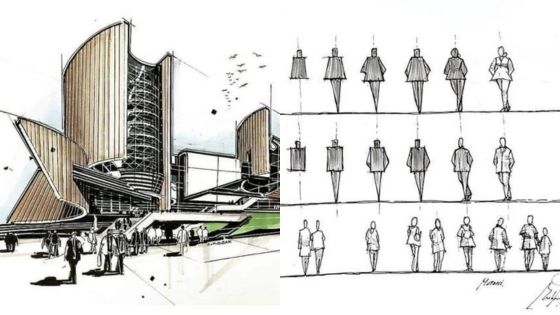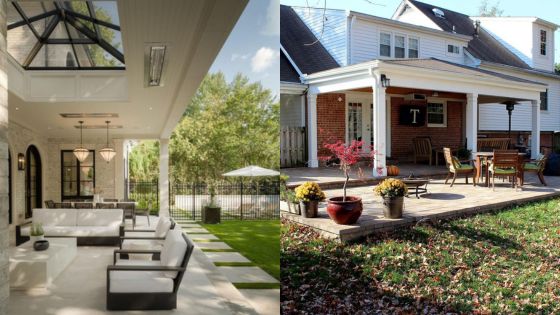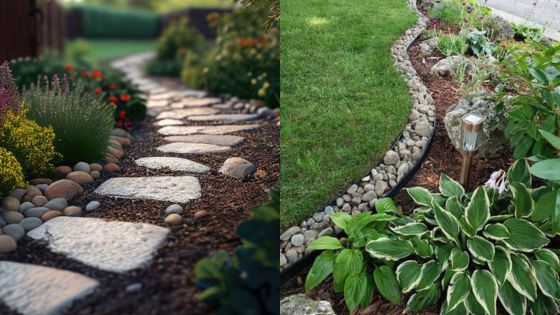Interior design trends are constantly evolving with each passing year, and 2023 is no exception. The upcoming year is expected to bring about a range of new trends in interior design that will impact the way people decorate their homes and commercial spaces. These trends will likely be influenced by a variety of factors, including sustainability, wellness, and personalization.

One of the most significant evolving aesthetics in interior design is the use of sustainable and natural materials. As people become more environmentally conscious, they are increasingly seeking out design elements that are eco-friendly and sustainable. This trend is expected to continue into 2023, with designers incorporating more natural materials such as wood, stone, and bamboo into their designs.
Another trend that is expected to be prominent in 2023 is the use of color and material palettes that promote wellness. Designers are increasingly incorporating calming colors and natural materials into their designs to create spaces that promote relaxation and tranquility. This trend is likely to be particularly important in spaces such as bedrooms and bathrooms, where people go to unwind and rejuvenate.
Key Takeaways
- Interior design trends are constantly evolving, and 2023 is expected to bring about a range of new trends.
- Sustainability, wellness, and personalization are expected to be significant factors influencing interior design trends in 2023.
- The use of sustainable and natural materials and color palettes that promote wellness are two trends that are expected to be prominent in 2023.
Evolving Aesthetics in Interior Design

As interior design continues to evolve, aesthetics have become an increasingly important aspect of the field. From the rise of maximalism to the use of concrete elements, designers are exploring new ways to create visually stunning spaces.
The Rise of Maximalism

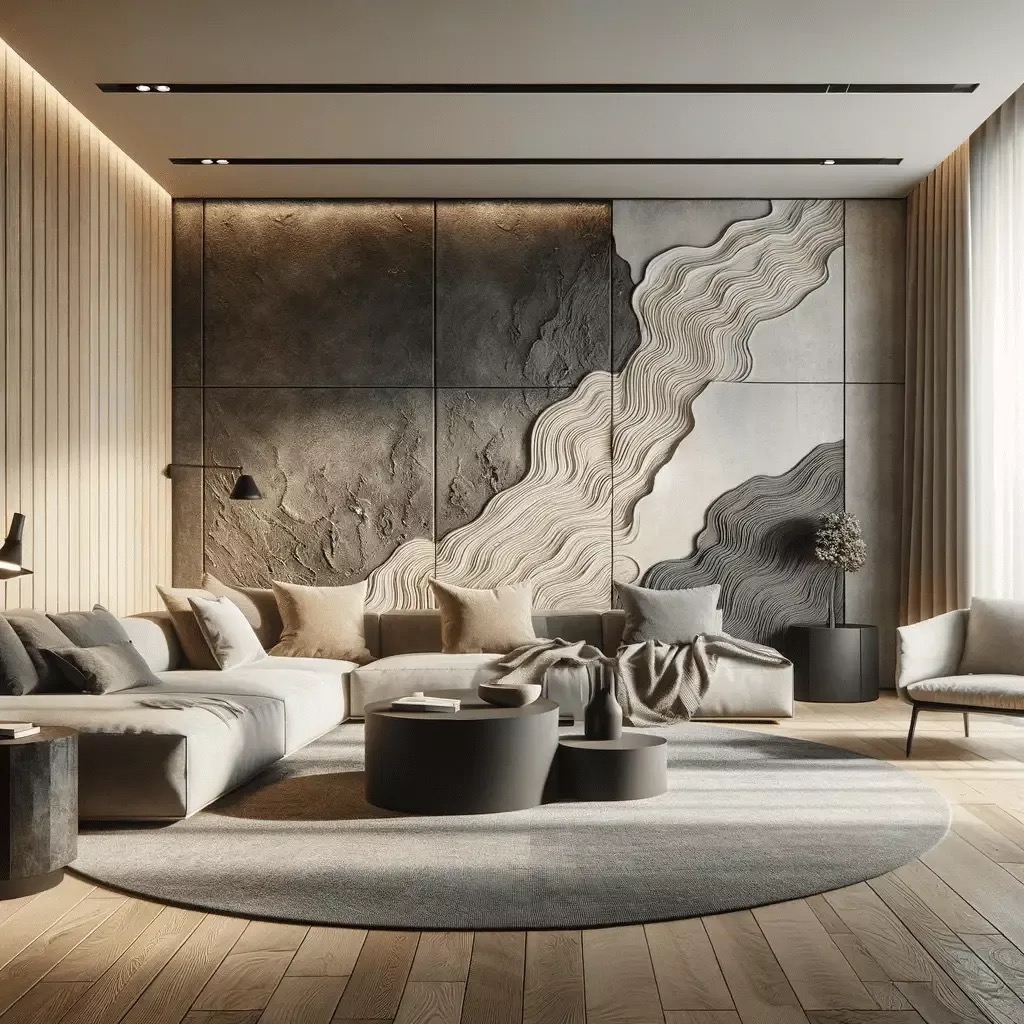
Maximalism is a design trend that embraces bold, vibrant colors and patterns. This trend is a stark contrast to the minimalist movement that dominated the design world for many years. Instead of clean lines and neutral colors, maximalism encourages designers to mix and match colors, patterns, and textures to create a visually stimulating space.
Nostalgic Design and Vintage Appeal
In recent years, designers have been turning to the past for inspiration. Nostalgic design and vintage appeal have become increasingly popular, as designers seek to create spaces that evoke a sense of nostalgia and comfort. This trend often incorporates antiques and vintage pieces, as well as warm, muted colors and soft textures.
Brutalism and Concrete Elements
Brutalism is a design movement that emerged in the mid-20th century. It is characterized by the use of raw, unfinished materials such as concrete and steel. In recent years, designers have been incorporating brutalist elements into their work, creating spaces that are both rough and refined. Concrete is particularly popular, as it adds a modern, industrial feel to any space.


In conclusion, the evolving aesthetics in interior design have opened up new possibilities for designers to create visually stunning spaces. From the maximalist trend to the use of concrete elements, designers have a wide range of tools at their disposal to create unique and beautiful spaces.
Sustainable and Natural Materials

Sustainable design is becoming increasingly popular in modern homes. People are now more aware of the impact their choices have on the environment and are looking for ways to reduce their carbon footprint. One way to achieve this is by incorporating natural materials into their interior design.
Wood and Stone in Modern Homes
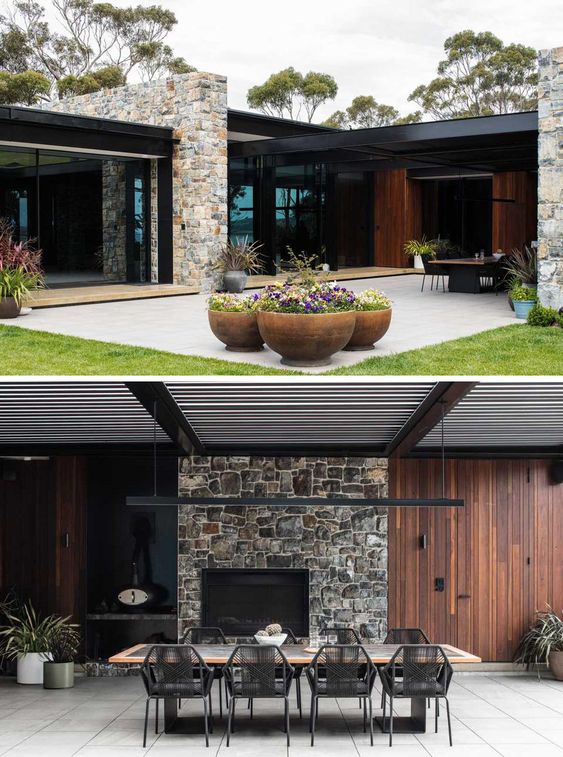
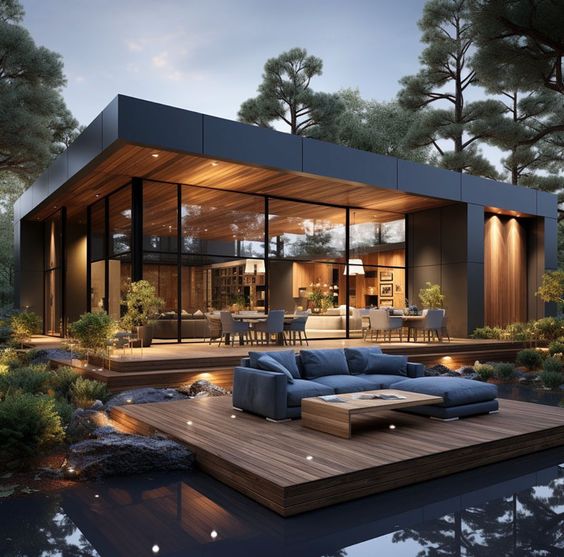
Wood and stone are two of the most popular natural materials used in modern interior design. Wood is a classic choice that adds warmth and texture to a space. It is also a renewable resource when sourced responsibly. Stone, on the other hand, adds a sense of luxury and sophistication to a room. It is durable and long-lasting, making it a great investment for homeowners.
Outdoor living spaces are becoming more popular, and as a result, designers are creating innovative outdoor furniture that is both functional and stylish. From weather-resistant sofas to dining sets that can withstand the elements, there are many options available for those looking to create an outdoor oasis. Also, if you have pool area you need to invest in high-quality chemicals for pools.
The Allure of Natural Fibers

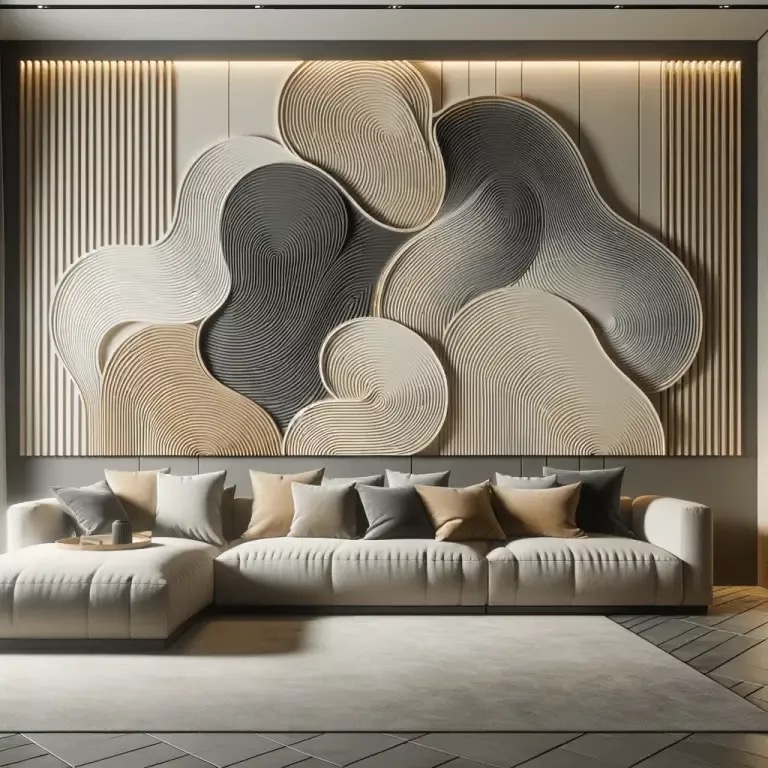
Natural fibers such as lace and clay are also gaining popularity in interior design. Lace adds a delicate touch to a room and can be used to create a romantic or vintage feel. Clay, on the other hand, adds a rustic and earthy vibe to a space. It is also a great insulator, making it perfect for homes in colder climates.
Eco-Friendly Fabrics and Finishes
Eco-friendly fabrics and finishes are another way to incorporate sustainable design into a home. Indestructible fabrics made from recycled materials are durable and long-lasting, making them a great investment for homeowners. Green finishes such as low-VOC paints and natural oils are also gaining popularity. They are non-toxic and emit fewer harmful chemicals into the air, making them a healthier choice for both the environment and the occupants of the home.

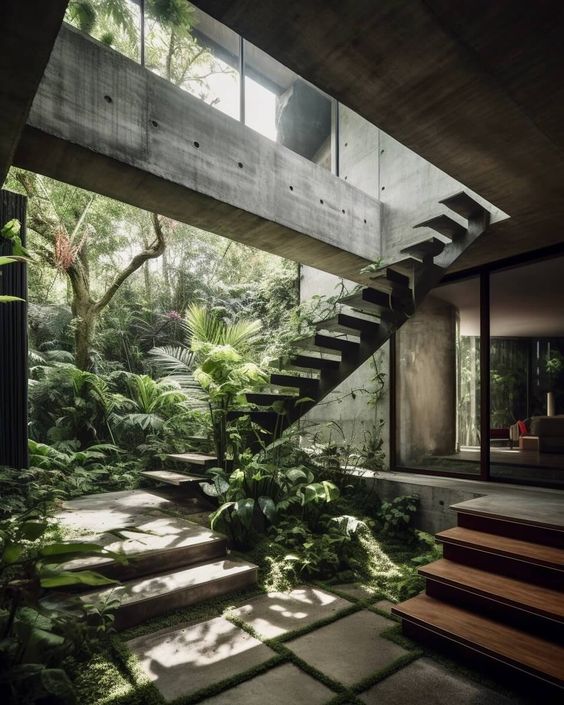
Incorporating sustainable and natural materials into interior design not only benefits the environment but also creates a warm and inviting space for homeowners. By using renewable resources and eco-friendly finishes, homeowners can reduce their carbon footprint and make a positive impact on the world.
Color Trends and Material Palette

Interior design trends are always evolving, and color and material choices are no exception. The right color palette and material selection can transform a space from mundane to breathtaking. In this section, we will explore some of the current color trends and material palettes that are dominating the interior design world.
Earth Tones and Muted Colors
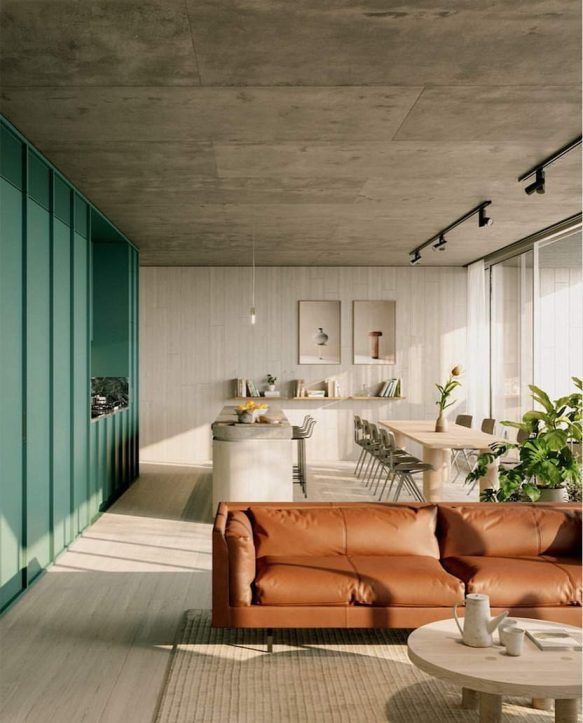
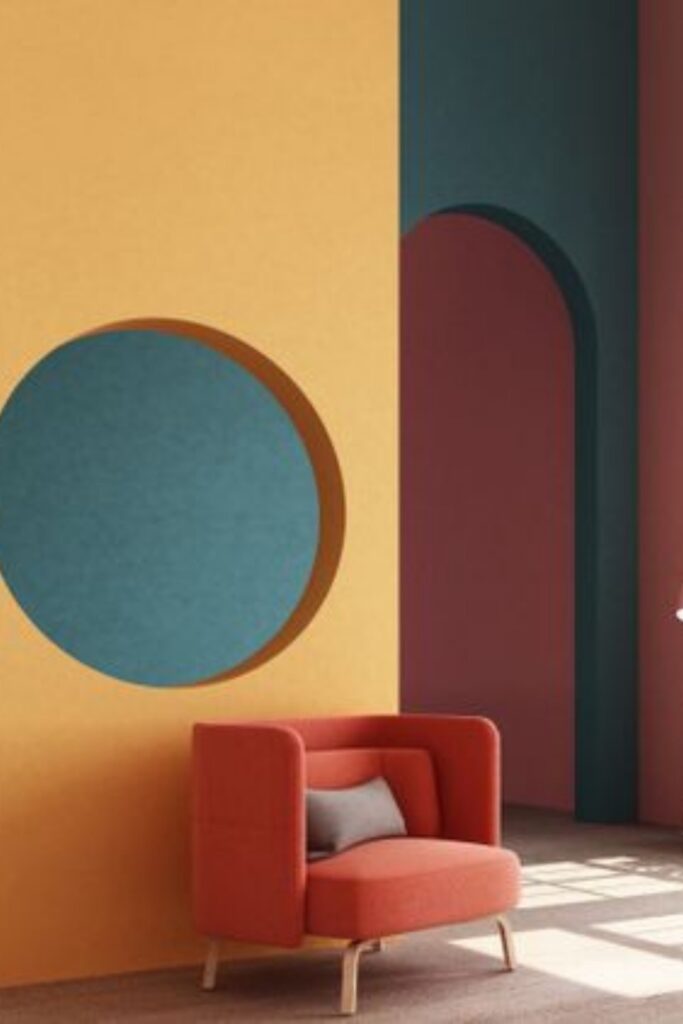
Earth tones and muted colors are making a comeback in interior design. These colors create a warm and inviting atmosphere that can make any space feel cozy. Shades of brown, beige, and cream are particularly popular in 2024. These colors are versatile and can work with a variety of design styles, from modern to traditional.
Metal Accents and Finishes

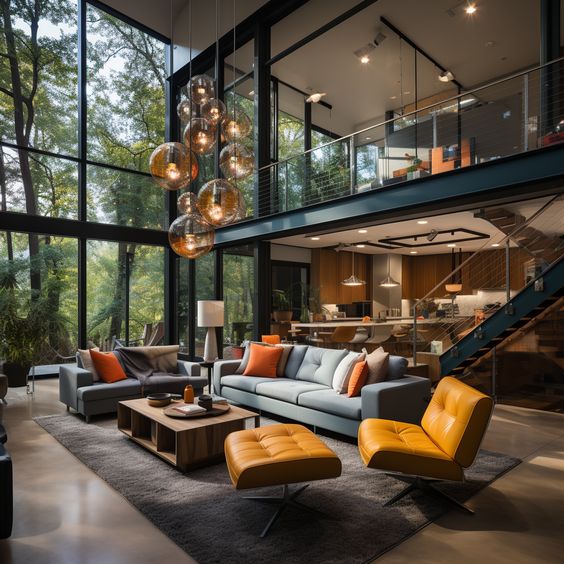
Metal accents and finishes are another popular trend in interior design. Nickel, steel, and aluminum are particularly popular in 2024. These metals can add a touch of sophistication to any space. They can be incorporated into a design in a variety of ways, from light fixtures to furniture legs.
The Return of Beige and Cream
Beige and cream are making a comeback in 2024. These colors were once considered boring and outdated, but they are now being embraced by designers for their versatility and timeless appeal. Beige and cream can be used as a neutral backdrop for other colors and textures, or they can be the star of the show in a monochromatic design.
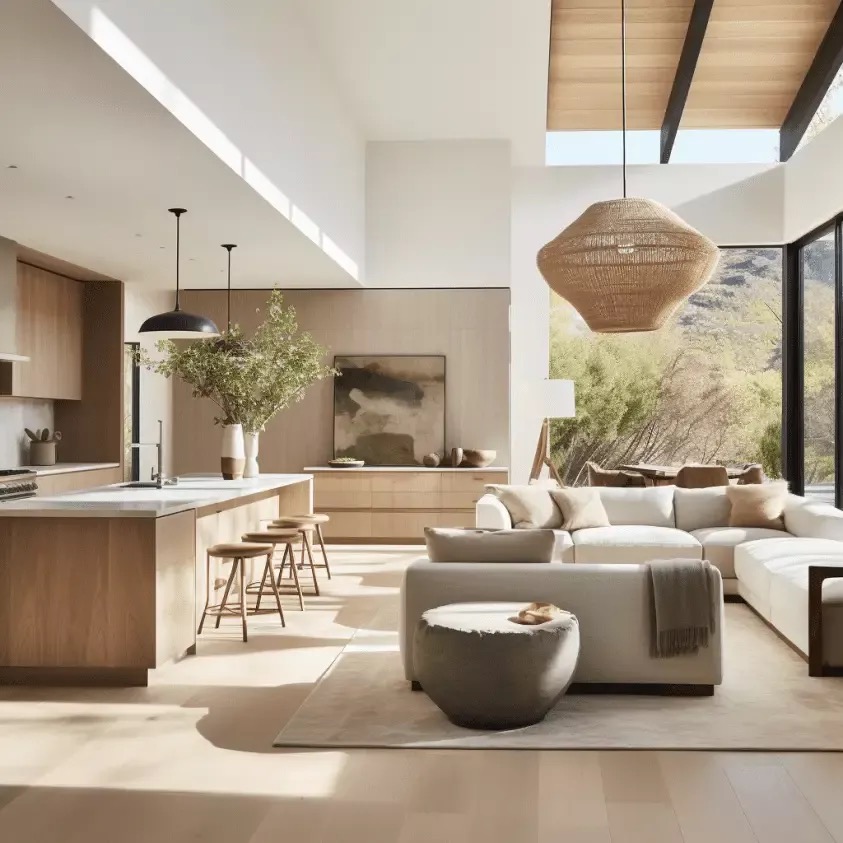
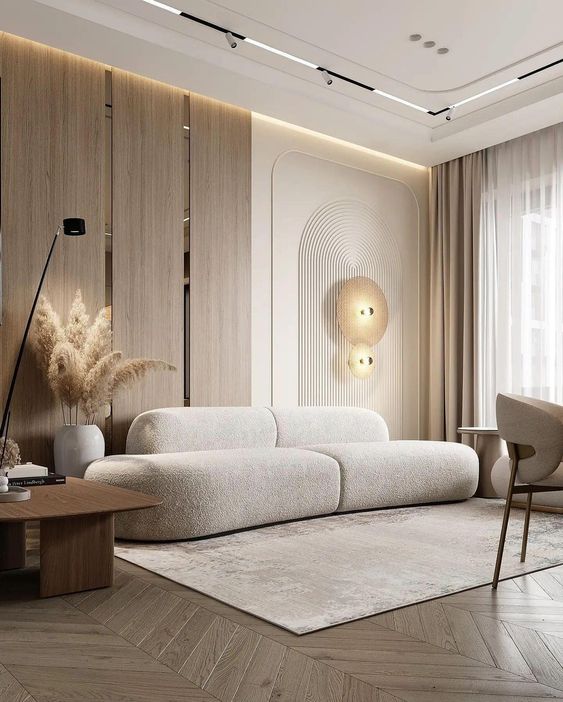
In conclusion, color trends and material palettes are an essential part of interior design. Earth tones and muted colors, metal accents and finishes, and the return of beige and cream are all dominating the interior design world in 2024. By incorporating these trends into their designs, designers can create spaces that are warm, inviting, and sophisticated.
Functional Spaces and Furniture

As interior design trends continue to evolve, the focus on functional spaces and furniture has become increasingly important. From multipurpose kitchen islands to innovative outdoor furniture, designers are looking for ways to create spaces that are both practical and aesthetically pleasing.
Adaptable Furniture for Versatile Living
Another significant trend in functional design is the incorporation of adaptable furniture. Adaptable furniture is becoming increasingly popular as people look for versatile and multifunctional home furnishings. These pieces are designed to serve multiple purposes and can easily be adjusted to suit different needs. For example, a sofa that can be converted into a bed, or a coffee table that can be adjusted in height to become a dining table, are perfect examples of adaptable furniture. This trend is particularly beneficial for those living in smaller spaces, where maximizing functionality is key.
Multipurpose Kitchen Islands

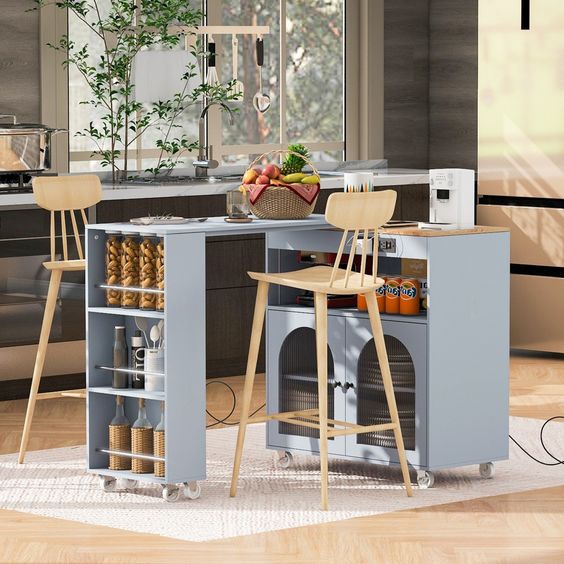
Kitchen islands have long been a popular feature in modern homes, but now they are taking on a new role as multipurpose spaces. Many designers are incorporating features such as built-in sinks, cooktops, and storage to make the island a functional workspace. Additionally, some islands are designed to double as a dining table or even a home office.
Innovative Outdoor Furniture
Outdoor living spaces are becoming more popular, and as a result, designers are creating innovative outdoor furniture that is both functional and stylish. From weather-resistant sofas to dining sets that can withstand the elements, there are many options available for those looking to create an outdoor oasis.
Specialized Dining Rooms and Wine Storage
For those who love to entertain, specialized dining rooms and wine storage are becoming must-have features in modern homes. Designers are creating dining rooms that can accommodate large groups of people, while also incorporating features such as built-in wine storage and temperature-controlled wine coolers.
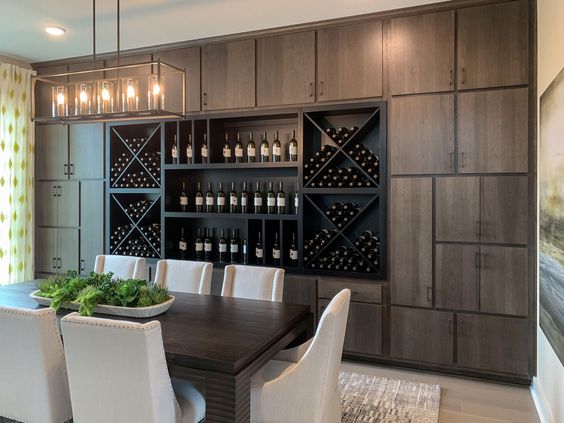

Overall, the trend towards functional spaces and furniture is driven by a desire for practicality and efficiency without sacrificing style. With the right design choices, it is possible to create a space that is both beautiful and functional, making it the perfect place to call home.
Artistic Expression in Interiors

Sculpture and Object as Focal Point
Art has always been a crucial element of interior design, and sculptures and objects can add a unique touch of artistic expression to any space. They can serve as focal points within a room, drawing the eye and creating interest. Sculptures and objects can be made from a variety of materials, including metal, stone, wood, and glass. They can range in size from small tabletop pieces to large installations.
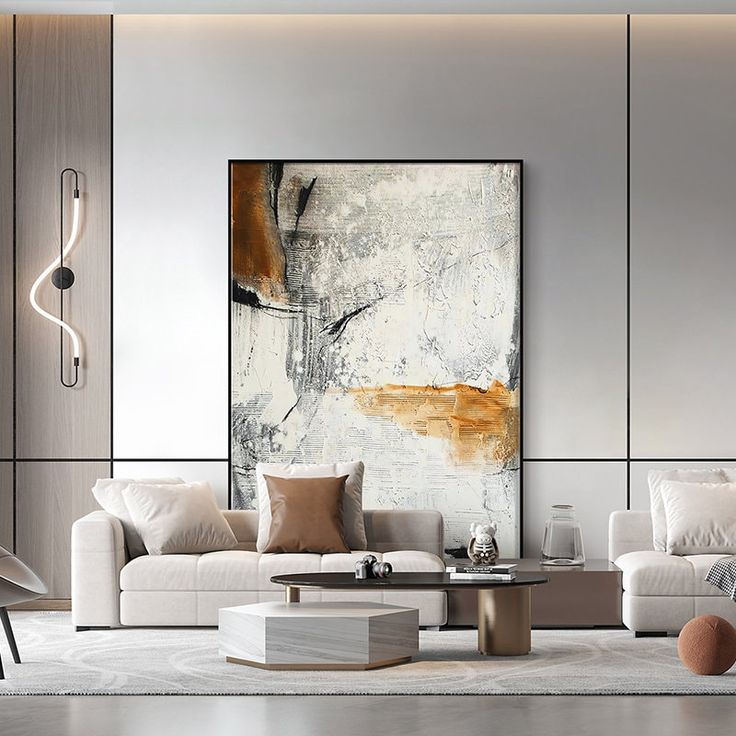

When selecting sculptures and objects for a space, it is important to consider the overall style and color scheme of the room. The piece should complement the existing design elements rather than clash with them. Additionally, the placement of the sculpture or object is crucial. It should be positioned in a way that allows it to be appreciated from all angles and not obstruct other important features in the space.
Pattern Play and Textural Contrast
Another way to incorporate artistic expression into interior design is through pattern play and textural contrast. Patterns can add visual interest to a space, whether it be through wallpaper, textiles, or decorative objects. Textural contrast can also create a tactile experience within a room, adding depth and dimension.

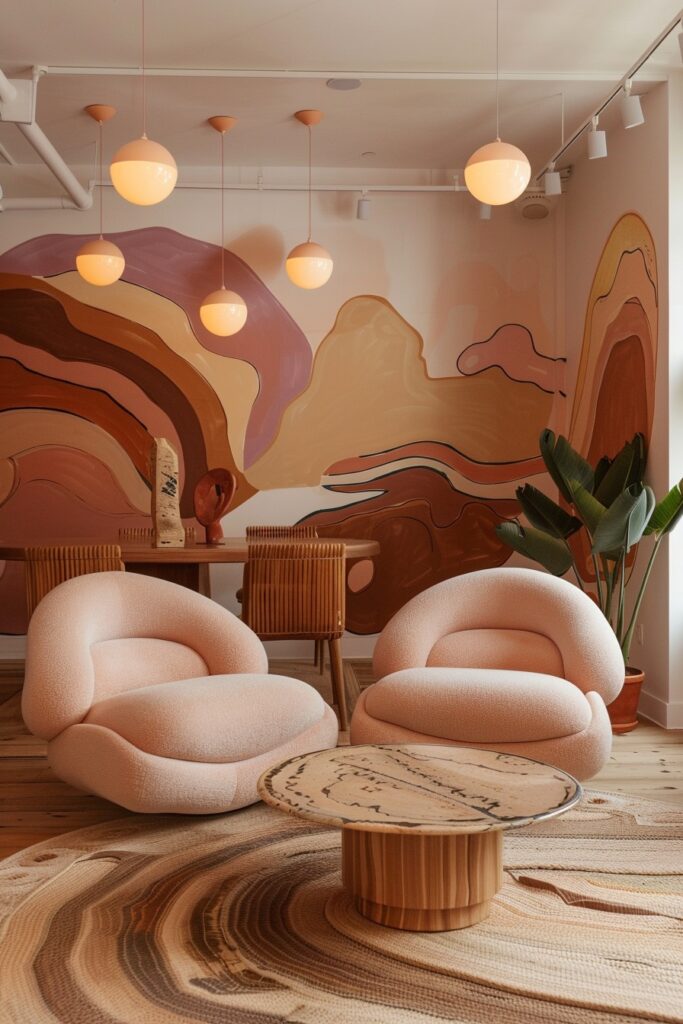
When using patterns and textures, it is important to consider the scale and placement of the elements. Large patterns can overwhelm a space, while small patterns may not have enough impact. Textures should also be balanced throughout the room to create a cohesive look.
Overall, incorporating artistic expression into interior design can elevate a space and add a unique touch. Whether it be through sculptures, objects, patterns, or textures, these elements can create a visually stunning and impactful environment.
Design Movements and Influencers

Grandmillennial Style and Craftsmanship
Grandmillennial style, also known as “granny chic,” is a design movement that celebrates the traditional and nostalgic elements of interior design. This movement is characterized by the use of vintage and antique pieces, patterns, and textures, combined with modern elements to create a fresh and updated look. Grandmillennial style emphasizes the importance of craftsmanship and quality, with a focus on handmade and artisanal pieces.
Influence of A-List Designers
A-list designers such as Kelly Wearstler have a significant impact on interior design trends. Their unique style and vision can influence the industry for years to come.
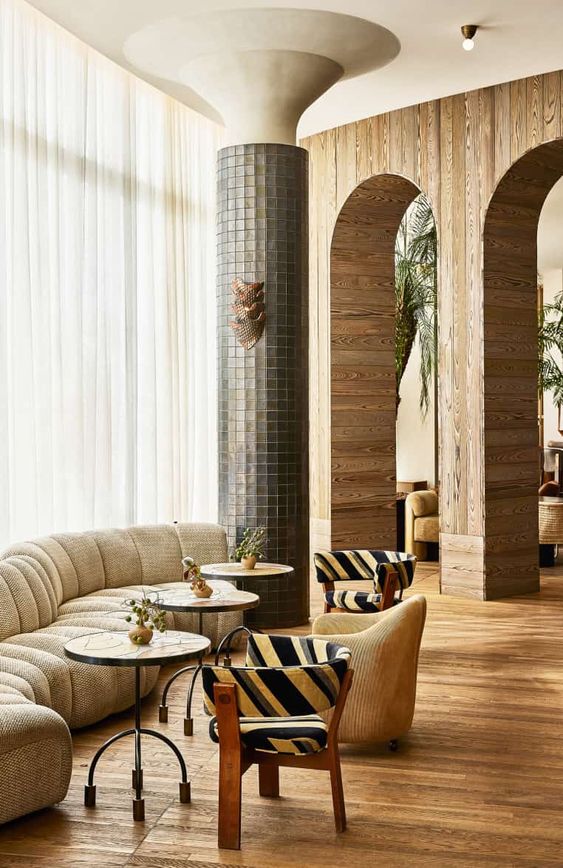

Kelly Wearstler is known for her bold and eclectic designs, which combine different textures, patterns, and colors to create a unique and memorable look. Her work has been featured in publications such as Elle Decor, and she has designed spaces for high-profile clients such as the Viceroy Hotel Group.
Interior Design Trends Forecasting by Experts
Experts in the interior design industry, such as Gemma Riberti of WGSN, play a crucial role in forecasting upcoming trends. These experts analyze consumer behavior, cultural shifts, and emerging technologies to predict what will be popular in the coming years. Gemma Riberti is the Head of Interiors at WGSN, a trend forecasting company that provides insights and analysis to businesses in the fashion, beauty, and interiors industries. Her team’s research helps inform the decisions of designers, retailers, and manufacturers around the world.
In summary, design movements and influencers have a significant impact on interior design trends. Grandmillennial style celebrates craftsmanship and traditional elements, while A-list designers like Kelly Wearstler bring bold and eclectic visions to the industry. Experts such as Gemma Riberti of WGSN play a crucial role in forecasting upcoming trends, helping to shape the future of interior design.
Advancements in Paint and Coatings

Advancements in paint and coatings have made it possible for interior designers to achieve a wide range of effects and finishes. From the limewash effect to plaster techniques, the latest trends in paint and coatings provide designers with greater flexibility and creativity in their work.
Limewash Effect and Plaster Techniques
One of the most popular trends in paint and coatings is the limewash effect. This technique involves applying a thin layer of paint to a surface and then using a damp cloth to wipe away some of the paint, creating a textured, aged look. This effect can be used to create a rustic, Mediterranean feel in a room.

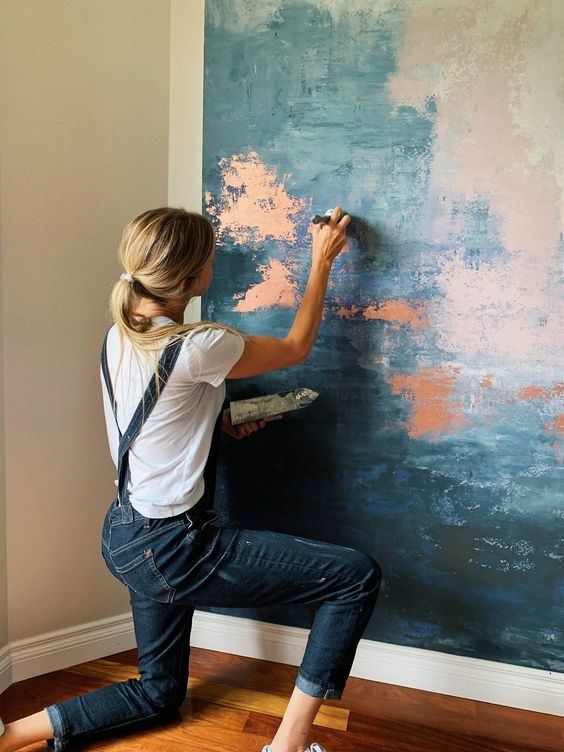
Plaster techniques are also gaining popularity in interior design. These techniques involve applying a layer of plaster to a surface and then using a trowel or other tool to create a textured, uneven finish. This technique can be used to create a variety of effects, from a smooth, polished look to a rough, textured finish.
Durability and Permanence in Finishes
In addition to providing greater flexibility in terms of design, advancements in paint and coatings have also led to greater durability and permanence in finishes. This is particularly important in high-traffic areas, where walls and other surfaces are subject to wear and tear.


Marble finishes, for example, are becoming increasingly popular in interior design. These finishes provide a high-end, luxurious look, but they are also durable and long-lasting. Other finishes, such as metallic and textured finishes, are also gaining popularity for their durability and unique aesthetic.
Overall, advancements in paint and coatings have opened up new possibilities for interior designers, allowing them to create a wide range of effects and finishes that are both beautiful and durable. Whether you’re looking for a rustic, aged look or a high-end, luxurious finish, the latest trends in paint and coatings have something to offer.
Cultural and Social Influences on Design

TikTok and Social Media Impact
In today’s world, social media platforms such as TikTok have a significant influence on interior design trends. With the rise of social media, designers are now able to showcase their work online, allowing people to see and follow the latest trends. TikTok, in particular, has become a popular platform for designers to share their work and inspire others.
TikTok has made it easier for designers to connect with their audience and understand what they want. Through the use of hashtags and comments, designers can interact with their followers and get feedback on their work. This feedback can help designers create spaces that are more appealing to their audience and keep up with the latest trends.
Joyful Spaces and Wellness Considerations
The concept of joy and wellness has become an essential consideration in interior design. People are now looking for spaces that not only look good but also make them feel good. Designers are now incorporating elements such as natural light, plants, and calming colors to create spaces that promote wellness and happiness.
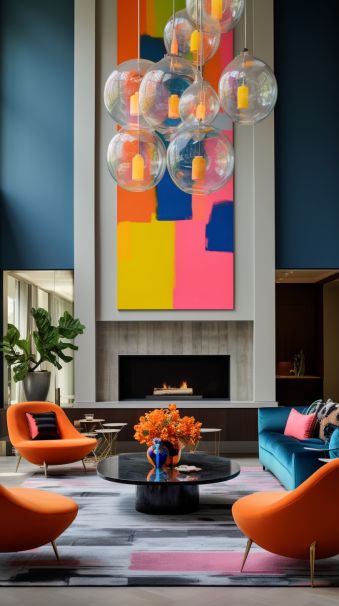
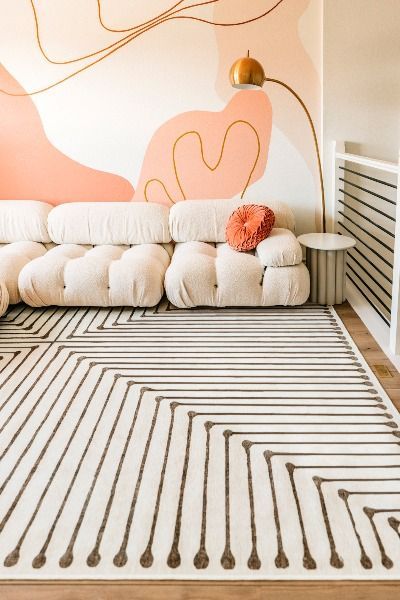
Designers are also focusing on creating spaces that are functional and practical. With more people working from home, designers are now creating home offices that are both comfortable and productive. They are also creating spaces that are flexible and can adapt to the changing needs of the user.
In conclusion, cultural and social influences play a significant role in shaping interior design trends. Social media platforms such as TikTok have made it easier for designers to showcase their work and connect with their audience. The focus on joy and wellness has also become an essential consideration in interior design, with designers creating spaces that promote well-being and happiness.
Minimalism vs. Nature-Inspired Design

When it comes to interior design, there are two popular design styles that are often compared: Minimalism and Nature-Inspired Design. While both styles have their unique characteristics, they share a common goal of creating a serene and peaceful atmosphere in the living space.
Simplistic Elegance of Minimalist Interiors
Minimalism is a design style that emphasizes simplicity, functionality, and the use of minimal elements. Minimalist interiors are known for their clean lines, neutral color palette, and lack of clutter. The minimalist design is all about creating a serene and peaceful environment by eliminating unnecessary elements and focusing on the essentials.

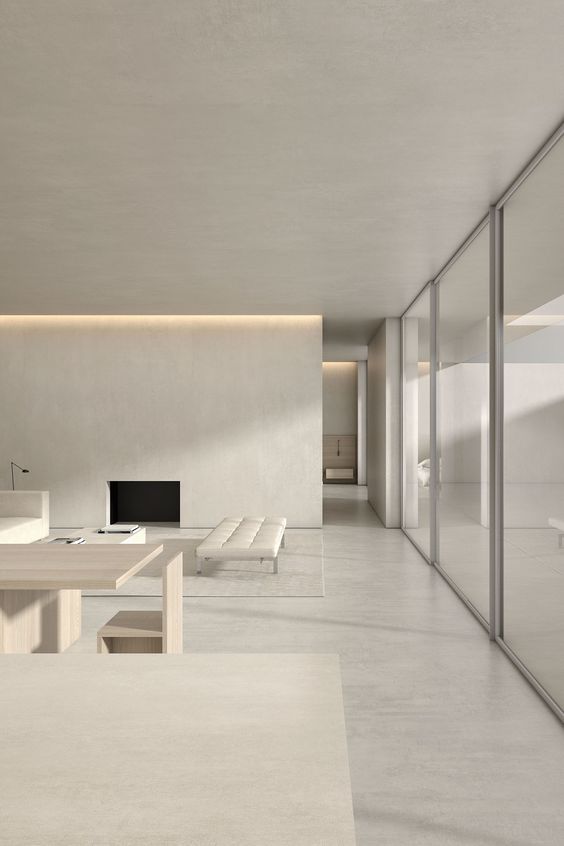
Minimalist interiors are perfect for those who prefer a clean and uncluttered living space. The minimalist design is all about simplicity and functionality, which makes it ideal for small spaces. Minimalist interiors are easy to maintain and require less cleaning, which is perfect for those who have a busy lifestyle.
Organic Shapes and Nature Integration
Nature-Inspired Design, on the other hand, is all about bringing the outdoors inside. This design style emphasizes the use of natural materials, colors, and textures to create a peaceful and relaxing atmosphere. Nature-Inspired interiors are known for their use of organic shapes, natural materials, and earthy tones.


Nature-Inspired Design is perfect for those who love nature and want to bring the outdoors inside. This design style emphasizes the use of natural materials such as wood, stone, and plants. Nature-Inspired interiors are perfect for creating a relaxing and peaceful environment, which is perfect for those who want to escape the stress of everyday life.


In conclusion, both Minimalism and Nature-Inspired Design have their unique characteristics and are perfect for creating a serene and peaceful atmosphere in the living space. Whether you prefer the simplicity of Minimalism or the natural elements of Nature-Inspired Design, both styles are sure to create a calming and relaxing environment in your home.
- 4.0Kshares
- Facebook0
- Pinterest4.0K
- Twitter0
